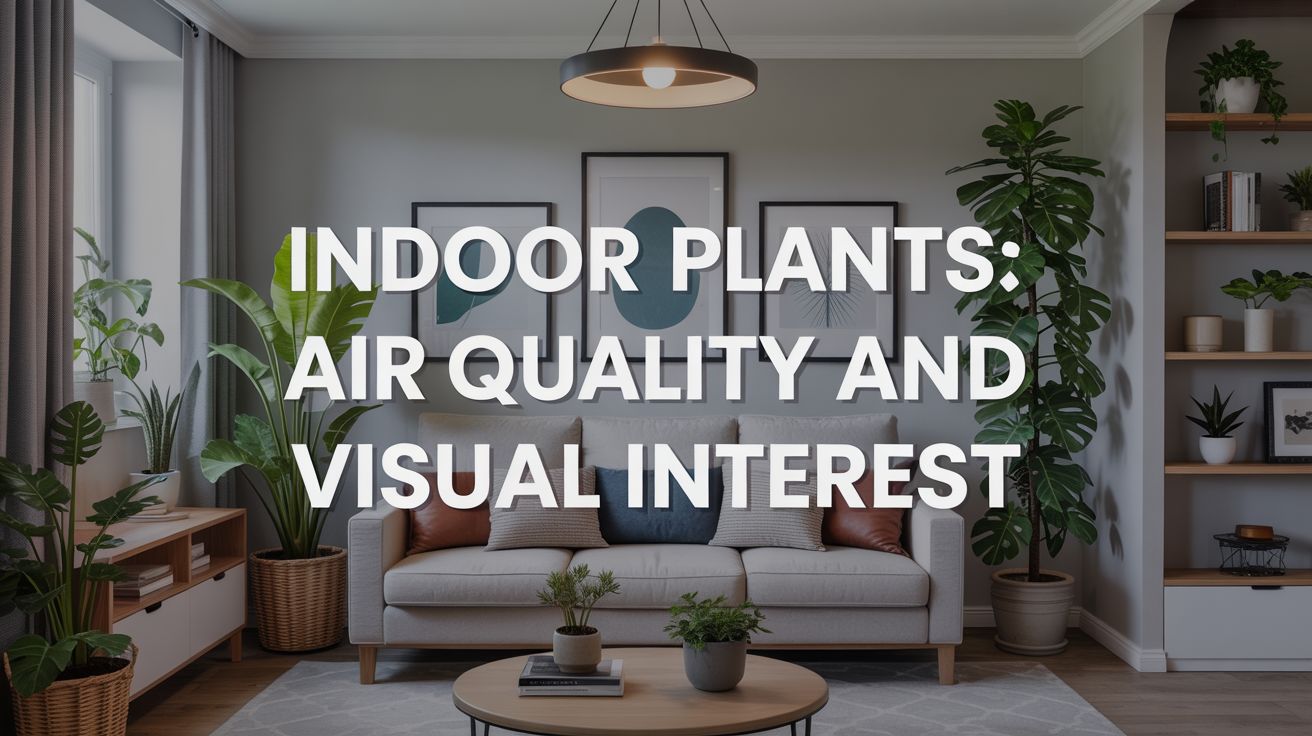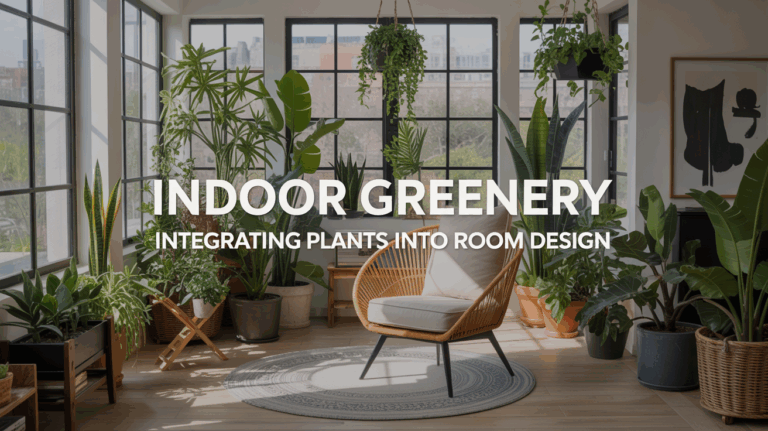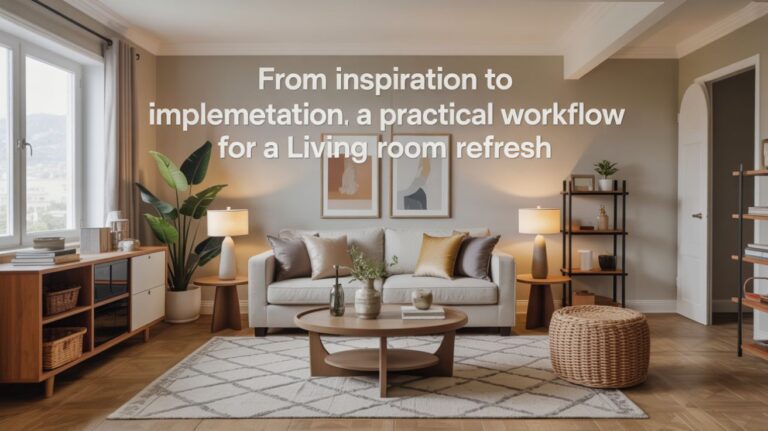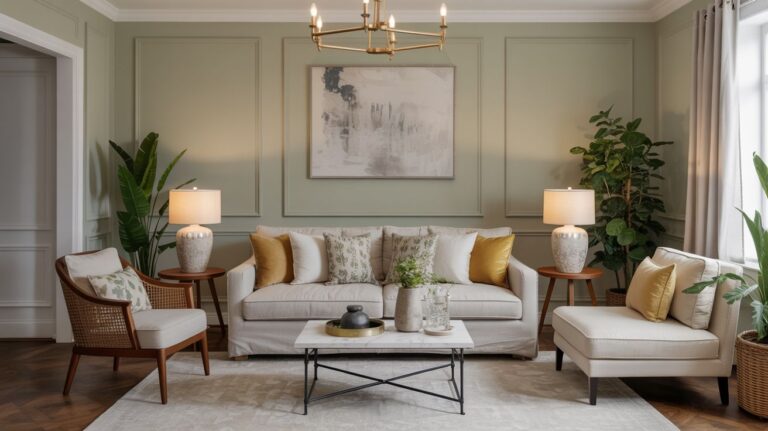Integrating Indoor Plants for Air Quality and Visual Interest in Living Spaces
I have been, or can be if you click on a link and make a purchase, compensated via a cash payment, gift, or something else of value for writing this post. As an Amazon Associate, I earn from qualifying purchases. Please read my full Affiliate Disclosure for more information.
Indoor plants modestly improve air quality by absorbing VOCs and stabilizing humidity, while enhancing visual interest through layered foliage, color, and texture. To maximize benefits, assess your room’s light, space, and microclimates, then select species with proven pollutant-removal and transpiration abilities, favoring pest-resistant options. Plan placement to optimize airflow and minimize stress, group plants by light needs, and coordinate watering, fertilizing, and repotting cycles. With careful design and monitoring, you’ll create a healthier, more inviting environment—and you’ll unlock more insights as you proceed.
Key Takeaways
- Select pollutant-removing, pest-resistant indoor plants with adequate transpiration to improve air quality and humidity subtly.
- Map light, temperature, and airflow microclimates to place plants for optimal health and minimal stress.
- Layer foliage, textures, and colors to create visual rhythm while supporting light reflection and space balance.
- Group plants by light needs and maintenance to simplify care and enhance microclimate consistency.
- Monitor weekly for pests and stress, document responses, and adjust placement to sustain long-term vitality and aesthetics.
Understanding Indoor Plant Benefits for Air Quality
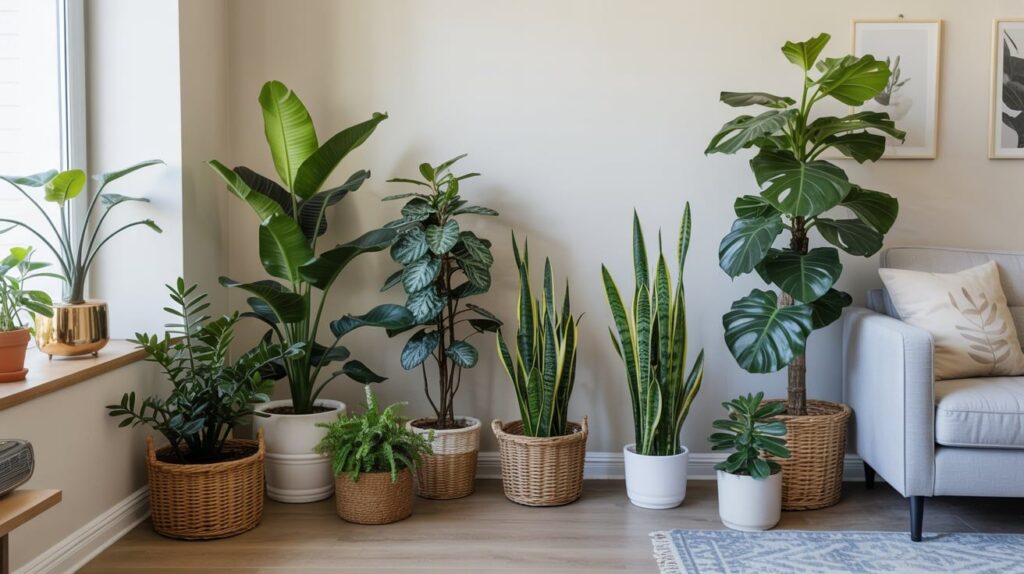
Indoor plants can meaningfully influence indoor air quality by reducing certain pollutants and contributing to humidity regulation, though the extent varies by species, environment, and exposure. You’ll find evidence that some species absorb volatile organic compounds and release moisture, potentially lowering formaldehyde and benzene levels while moderating humidity. However, effects are context dependent and modest for single plants. When evaluating air purification benefits, consider species selection, placement, and maintenance routines. This topic also intersects mental well being, as reduced irritants and stable humidity can support comfort and cognitive performance. Overall, plants contribute to air quality modestly but meaningfully within integrated strategies.
Assessing Light, Space, and Microclimates in Your Room
Assess how lighting variations and microclimate mapping influence plant selection and placement in your room. You’ll identify light intensity, duration, and spectrum shifts across zones, then map subtle temperature and humidity differences that affect transpiration and growth. This groundwork supports evidence-based decisions on species compatibility and space use.
Lighting Variations
Why consider lighting variations when selecting plants? You’ll evaluate how light quality, duration, and intensity shift with space, furniture, and season. This assessment identifies photosynthetic light demands and tolerances, aligning them with available spectra from natural and artificial sources. Artificial lighting can compensate low daylight but varies in spectrum and duration, influencing growth form and flowering propensity. Consider seasonal changes: days shorten, light strength declines, and indoor shading may deepen. Record typical irradiance levels and photoperiods for each plant class. Use conservative margins, monitor leaf coloration and new growth, and adjust placement or lighting to maintain health and visual interest.
Microclimate Mapping
Microclimate mapping identifies the spatial and temporal variations in light, temperature, humidity, and airflow within a room to optimize plant health and aesthetics. You should systematically quantify light intensity at multiple points, map thermal gradients across surfaces, and record humidity fluctuations near foliage. Document how furniture, curtains, and ventilation influence microclimates, then relate these patterns to plant needs. Consider microclimate effects on transpiration rates, pest risk, and growth form. Use this data to implement plant placement strategies that minimize stress, maximize access to favorable light, and promote uniform environmental exposure. This approach supports resilient, visually coherent arrangements.
Selecting Plant Species for Pollutant Removal and Humidity
Selecting plant species for pollutant removal and humidity involves choosing taxa with proven phytoremediation capabilities and suitable transpiration rates. You should prioritize species demonstrated to remove volatile organic compounds (VOCs) at meaningful indoor concentrations and to maintain stable humidity through steady transpiration. Consider leaf surface area, stomatal behavior, and root-zone interactions that influence contaminant uptake. Favor succulent varieties for storage traits and efficient water use, while balancing ascape goals. Assess pest resistant species to reduce maintenance and pesticide inputs. Compile evidence from peer‑reviewed studies and indoor air monitoring to justify species selection aligned with humidity targets and aesthetic requirements.
Designing Visual Interest: Foliage, Colors, and Textures
You’ll start by evaluating foliage variety to maximize structural contrast and visual rhythm within a given space. Consider color harmonies that support canopies and reflect light efficiently, balancing bold accents with muted tones to reduce visual noise. Finally, assess texture layering to create depth, using combinations of smooth, glossy, and coarse surfaces to guide attention and enhance perceived airiness.
Foliage Variety
Foliage variety adds visual interest by combining leaves of different shapes, sizes, and textures, which can enhance perceived depth and complement indoor lighting. You optimize plant assemblages by pairing broad, glossy leaves with narrow, matte ones, creating contrast that guides eye movement without overwhelming space. Focus on proportional variety: staggered leaf sizes, distinct textures, and varied edge patterns reduce flatness. Integrate decorative leaves in focal positions to anchor schemes, while supporting cast increases perceived airiness. Document species traits and growth habits to guarantee maintenance feasibility. This approach supports visual hierarchy, durability, and long-term decorative value through deliberate foliage variety.
Color Harmonies
Color harmonies tie leaf shapes, textures, and pot materials into a cohesive visual signal. You evaluate color schemes using hue relationships, saturation levels, and contrast to guide perceived balance. Favor subtle color saturation on foliage with higher saturation accents to anchor focal points, while employing cooler or neutral tones in surrounding containers to reduce visual noise. Color contrast between leaf tones and pot finishes enhances legibility of form and depth, supporting legibility of spatial cues. Maintain consistency by aligning plant groupings with a unifying palette, adjusting saturation to avoid overstimulation and preserve calm, readable composition.
Texture Layering
Texture layering adds depth to indoor plant displays by pairing leaf surface variations with container finishes and backing materials. You balance glossy, matte, and fuzzy textures to create visual texture contrasts that guide attention and reinforce spatial rhythm. Implement texture layering techniques by pairing broad, ribbed leaves with smooth pots, using woven or neutral backdrops to prevent clashing surfaces. Consider scale and repetition: repeat a single textural motif across different plant sizes to achieve coherence. Subtle contrasts reduce visual noise, while deliberate accent textures highlight focal specimens. Ground the arrangement in light availability and humidity to sustain texture integrity.
Layering Care: Watering, Fertilizing, and Repotting Schedules
Effective plant care hinges on synchronized watering, fertilizing, and repotting schedules that reflect each species’ growth cycle, substrate moisture retention, and nutrient needs. You’ll implement tailored watering routines based on pot size, substrate type, and ambient conditions, avoiding overwatering by checking substrate moisture before each session. Align fertilizing schedules with growth spurts, employing half-strength formulations for most foliage plants and seasonal adjustments for others. Schedule repotting before root-bound symptoms appear, typically every 12–24 months, using fresh substrate with appropriate drainage. Document deviations, environmental changes, and goals to refine the overall care plan and sustain plant vigor.
Grouping and Placement Strategies for Maximized Impact
Grouping and placement decisions should be data-driven and purposeful, aligning plant attributes with light, distance, and focal-point considerations to maximize visual impact and health. You’ll map species light needs to window orientation, grouping by contrasting textures, heights, and leaf forms to create legible visual layers. Use decorative containers to establish scale and continuity, ensuring drainage and weight safety. Consider seasonal arrangements to adapt lighting and color emphasis across the year, rotating specimens to reduce phototropic bias. Document placement rationale, monitor microclimates, and adjust spacing for airflow. This approach supports aesthetic coherence, maintenance efficiency, and plant essentiality without clutter.
Maintaining Health: Troubleshooting Pests and Stress Signs
Even with careful grouping and placement, indoor plants face pests and environmental stress that can undermine health and long-term resilience. You should begin with accurate pest identification, inspecting undersides of leaves, stems, and soil weekly for signs like speckling, stippling, silk, or honeydew. When symptoms arise, implement prompt stress symptom management: adjust watering to avoid root rot, improve humidity without encouraging fungus, and rotate light exposure to reduce etiolation. Isolate new or suspect specimens to prevent spread. Document changes and monitor response over 2–4 weeks, consulting species-specific guidance as needed. Maintain consistent sanitation to sustain vitality and measurable improvements.
Conclusion
While integrating indoor plants, you’ll optimize air quality through species with documented pollutant uptake and higher transpiration rates. Assess your room’s light, space, and microclimates to select compatible plants and arrange them for maximal visual impact. Implement consistent care—watering, fertilizing, and repotting on schedule—and group plants to support microclimates. Monitor health, promptly address pests, and adjust placement as needs shift. When executed with precision, this approach yields measurable air quality and aesthetic benefits.
